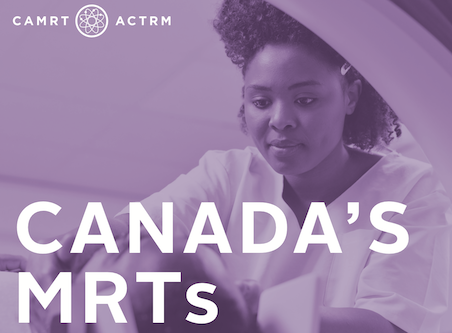This year, Canada will celebrate Medical Radiation Technology Week from November 3-9. This week is a time to celebrate the essential role of Medical Radiation Technologists (MRTs) in the Canadian healthcare system.
MRTs play a critical role in Canada’s healthcare system. In total, there are more than 22,000 MRTs working in medical imaging and radiation therapy across the country in the specialty disciplines of radiologic technology, nuclear medicine technology, magnetic resonance imaging and radiation therapy. While many professionals in the hospital may not know their title, MRTs play vital roles in the lives of millions of Canadians receiving healthcare each year, whether in the hospital, imaging clinics or cancer centres.
Here are some things you may not know about your Medical Radiation Technologist colleagues ahead of MRT Week:
Did you know you can see MRTs working in almost every area of the hospital?
• They work in oncology, gastroenterology, neurology, urology, cardiology, neonatology, orthopedics, pediatrics and radiology. They can be found in diagnostic imaging departments, cancer care clinics, operating rooms, emergency departments, intensive care units, and cardiology suites.
Did you know MRTs deliver in excess of 30 million imaging exams to Canadians every year?
• Imaging is a vital part of modern medicine. Medical imaging such as x-rays, CT scans, MRI, PET scans, nuclear medicine, mammograms, and more are central to the proper diagnosis, care and management of millions of Canadians. MRTs in their many roles are essential to making sure this high technology is available to patients and their healthcare providers.
Did you know 50 per cent of cancer patients require radiation therapy as part of their treatment plan?
• MRTs provide essential cancer care, treating hundreds of thousands of patients per year and are a key caretaker in a cancer patient’s journey.
Did you know MRTs work with live sources of radiation?
• MRTs working in nuclear medicine use radioactive materials, known as radiopharmaceuticals, for imaging and cancer treatment. They are even considered nuclear energy workers for this reason!
Did you know there are sub-specialties in the profession that require additional education?
• MRTs working in radiologic technology can specialize in CT imaging, mammography, and interventional radiology. MRTs working in radiation therapy can specialize to become dosimetrists. MRTs working in nuclear medicine can train to become radiation safety officers.
As you can see, medical radiation technologists interact with almost every single patient in the hospital or clinic. Their unequalled contributions to patient care, diagnostic imaging, and radiation therapy are the main reasons to celebrate this amazing
profession!
If you work in a hospital or healthcare delivery in Canada, chances are you know and interact professionally with more than a few MRTs. These are your colleagues, more than 22,000 of them across the country, working in medical imaging and radiation therapy. If you come across one of your MRT colleagues the week of November 3-9, take a minute to wish them a Happy MRT Week. It will surely be appreciated.
Submitted by the Canadian Association of Medical Radiation Technologists (CAMRT). www.camrt.ca


